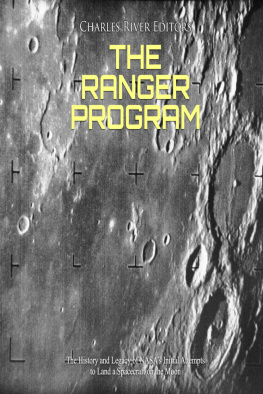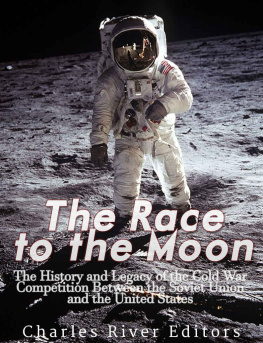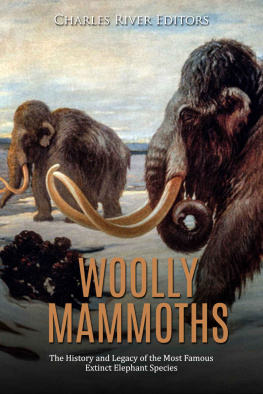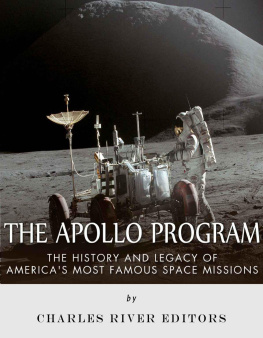Charles River Editors - The Ranger Program: The History and Legacy of NASA’s Initial Attempts to Land a Spacecraft on the Moon
Here you can read online Charles River Editors - The Ranger Program: The History and Legacy of NASA’s Initial Attempts to Land a Spacecraft on the Moon full text of the book (entire story) in english for free. Download pdf and epub, get meaning, cover and reviews about this ebook. year: 2020, publisher: Charles River Editors, genre: Romance novel. Description of the work, (preface) as well as reviews are available. Best literature library LitArk.com created for fans of good reading and offers a wide selection of genres:
Romance novel
Science fiction
Adventure
Detective
Science
History
Home and family
Prose
Art
Politics
Computer
Non-fiction
Religion
Business
Children
Humor
Choose a favorite category and find really read worthwhile books. Enjoy immersion in the world of imagination, feel the emotions of the characters or learn something new for yourself, make an fascinating discovery.
- Book:The Ranger Program: The History and Legacy of NASA’s Initial Attempts to Land a Spacecraft on the Moon
- Author:
- Publisher:Charles River Editors
- Genre:
- Year:2020
- Rating:5 / 5
- Favourites:Add to favourites
- Your mark:
- 100
- 1
- 2
- 3
- 4
- 5
The Ranger Program: The History and Legacy of NASA’s Initial Attempts to Land a Spacecraft on the Moon: summary, description and annotation
We offer to read an annotation, description, summary or preface (depends on what the author of the book "The Ranger Program: The History and Legacy of NASA’s Initial Attempts to Land a Spacecraft on the Moon" wrote himself). If you haven't found the necessary information about the book — write in the comments, we will try to find it.
The Ranger Program: The History and Legacy of NASA’s Initial Attempts to Land a Spacecraft on the Moon — read online for free the complete book (whole text) full work
Below is the text of the book, divided by pages. System saving the place of the last page read, allows you to conveniently read the book "The Ranger Program: The History and Legacy of NASA’s Initial Attempts to Land a Spacecraft on the Moon" online for free, without having to search again every time where you left off. Put a bookmark, and you can go to the page where you finished reading at any time.
Font size:
Interval:
Bookmark:
By Charles River Editors
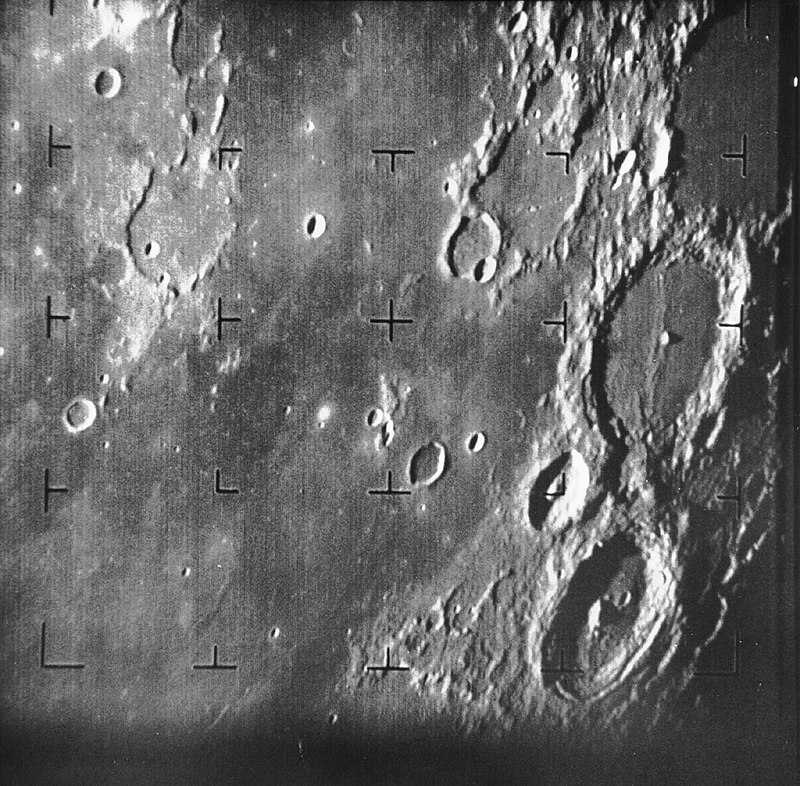
A picture of the Moons surface taken by Ranger 7

Charles River Editors provides superior editing and original writing services in the digital publishing industry, with the expertise to create digital content for publishers across a vast range of subject matter. In addition to providing original digital content for third party publishers, we also republish civilizations greatest literary works, bringing them to new generations of readers via ebooks.
Sign up here to receive updates about free books as we publish them , and visit Our Kindle Author Page to browse todays free promotions and our most recently published Kindle titles.

Ranger 7
Today the Space Race is widely viewed poignantly and fondly as a race to the Moon that culminated with Apollo 11 winning the Race for the United States. In fact, it encompassed a much broader range of competition between the Soviet Union and the United States that affected everything from military technology to successfully launching satellites that could land on Mars or orbit other planets in the Solar System. Moreover, the notion that America won the Space Race at the end of the 1960s overlooks just how competitive the Space Race actually was in launching people into orbit, as well as the major contributions the Space Race influenced in leading to todays International Space Station and continued space exploration.
The Apollo space program is the most famous and celebrated in American history, but the first successful landing of men on the Moon during Apollo 11 had complicated roots dating back over a decade, and it also involved one of NASAs most infamous tragedies. Landing on the Moon presented an ideal goal all on its own, but the governments urgency in designing the Apollo program was actually brought about by the Soviet Union, which spent much of the 1950s leaving the United States in its dust (and rocket fuel). In 1957, at a time when people were concerned about communism and nuclear war, many Americans were dismayed by news that the Soviet Union was successfully launching satellites into orbit.
Among those concerned was President Dwight D. Eisenhower, whose space program was clearly lagging a few years behind the Soviets space program. From 1959-1963, the United States worked toward putting satellites and humans into orbit via the Mercury program, but Eisenhowers administration was already designing plans for the Apollo program by 1960, a year before the first Russian orbited the Earth and two years before John Glenn became the first American to orbit the Earth.
On May 25, 1961, President John F. Kennedy addressed Congress and asked the nation to commit itself to achieving the goal, before this decade is out, of landing a man on the Moon and returning him safely to the Earth. Given Americas inability to even put a man in orbit yet, this seemed like an overly ambitious goal, and it isnt even clear that Kennedy himself believed it possible; after all, he was reluctant to meet NASA Administrator James E. Webbs initial funding requests.
Throughout the 1960s, NASA would spend tens of billions on missions to the Moon, the most expensive peacetime program in American history to that point, and Apollo was only made possible by the tests conducted through earlier missions, including the historic Ranger Program. Conceived as an early part of the attempt to land a man on the Moon, Ranger was designed to photograph the lunar surface in preparation for future landings. Until Ranger, images of the Moon were only available through Earth-based telescopes, which lacked the detail necessary to determine safe sites for landing a spacecraft. Ranger aimed to fill in that gap of knowledge, and like many of NASAs missions during the 1960s, the program exemplified both the successes and the failures of the agencys early years. Nonetheless, the Ranger Program would set important precedents by taking the first close-up photos of the Moon and landing the first American spacecraft on the lunar surface.
The Ranger Program: The History and Legacy of NASAs Initial Attempts to Land a Spacecraft on the Moon examines the origins behind the missions, the space probes involved, and the historic results. Along with pictures of important people, places, and events, you will learn about the Ranger Program like never before.
From the earliest times, people have looked up at the night sky and wondered about those bright points of light. Before the age of cities, the Moonless night sky had always been dark and full of stars so numerous they could never be counted. All of them were contained within the Milky Way galaxy, a permanent cloud with countless millions of stars.
William Gilbert (15441603), who discovered that Earth had two poles of a magnetic field, imagined that other worlds orbiting distant stars had their own magnetic fields and perhaps even life. In 1610, the legendary Italian scientist Galileo Galilei pointed his telescope toward Jupiter and discovered that it had four Moons that went around it in the same manner as the planets that circled the Sun. Respective to distance from their parent planet, they are Io, Europa, Ganymede and Callisto.
It wasnt until 45 years later that Dutch astronomer Christiaan Huygens discovered a massive Moon orbiting the ringed planet Saturn. On March 25, 1655, Huygens discovered Titan, the only Moon in the Solar System with a thick atmosphere. In fact, the atmosphere has a surface pressure 1.45 times that found at sea level on Earth, and Titan has a mean diameter of 5,150 kilometers (1.48 times that of the Moon), making Titan the second largest natural satellite in the Solar System after Jupiters Ganymede. Both Titan and Ganymede are larger than the planet Mercury.
Huygens, trusting his own memory, had holes of various sizes bored into a screen facing the Sun and found the one that most closely matched the apparent brightness of Sirius, the Dog Star, the brightest in the night sky. From this, he calculated the immense distance to that star. If the Sun and Sirius had been intrinsically the same brightness when viewed from the same distance, the scientist would have been close in his calculations. However, Sirius is an A1V hot, blue-white dwarf, far brighter than the Sun, which is a G2V, yellow-white dwarf star. Sirius when measured with todays accuracy is 22.3 times as bright as the Sun, so if they were to be placed side-by-side at the standard distance of 10 parsecs (32.6 light years), Sirius would be 3.37 magnitudes brighter.
On March 13, 1781, German-born English astronomer William Herschel discovered the planet Uranus. Originally, he thought it was a comet, but other astronomers calculated its orbit and found it to be nearly circular, like the other planets.
In 1801, Italian priest Giuseppe Piazzi discovered a new planet orbiting between Mars and Jupiter. It turned out to be extremely small with a diameter of only 946 kilometers (27% of the Moons diameter), and Piazzi suggested calling it Cerere Ferdinandea, but the international community of astronomers settled on Ceres. Today, Ceres is referred to as a dwarf planet.
Font size:
Interval:
Bookmark:
Similar books «The Ranger Program: The History and Legacy of NASA’s Initial Attempts to Land a Spacecraft on the Moon»
Look at similar books to The Ranger Program: The History and Legacy of NASA’s Initial Attempts to Land a Spacecraft on the Moon. We have selected literature similar in name and meaning in the hope of providing readers with more options to find new, interesting, not yet read works.
Discussion, reviews of the book The Ranger Program: The History and Legacy of NASA’s Initial Attempts to Land a Spacecraft on the Moon and just readers' own opinions. Leave your comments, write what you think about the work, its meaning or the main characters. Specify what exactly you liked and what you didn't like, and why you think so.

